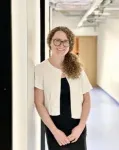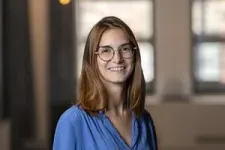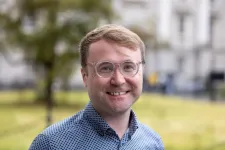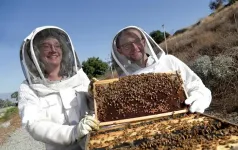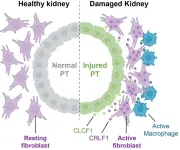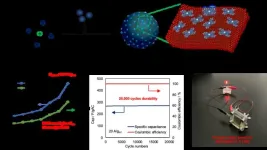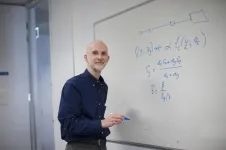(Press-News.org) A combined 4.8 million euros in ERC Starting Grants will go to scientists at the Institute of Science and Technology Austria (ISTA). Awarded to early career researchers by the European Research Council (ERC), Starting Grants help researchers launch and develop projects, build capable teams, and pursue cutting-edge research. All three of ISTA’s ERC winners wholly embody the Institute’s curiosity-driven mission: they aim to find out how cells keep time, improve the way we date our stars, and optimize the extraction of relevant information from our ever-growing data.
ERC Starting Grants are for Europe-based researchers who have finished their PhD within the last two to seven years. Those who made it through the rigorous selection process receive up to 1.5 million euros, useable over a period of up to five years. In some cases, additional funds are awarded for relocation or new equipment.
How to make less mean more? Helping medicine find the needle in the haystack
Marco Mondelli, part of the faculty at ISTA since 2019, is originally from Siena, Italy. The 35-year-old computer scientist completed his PhD at the École Polytechnique Fédérale de Lausanne (EPFL) before doing his postdoc at Stanford University. In 2019, Mondelli won the Lopez-Loreta Prize and came to ISTA to assemble his group. Having now secured 1.66 million euros with the ERC Starting Grant, Mondelli’s team is primed for further expansion.
Mondelli’s project, “INF2,” is about simplifying the way we extract information from data—not only to do more with less, but to make less mean more. “Classical statistical methods are just not designed for high-dimensional problems,” says Mondelli, “my project presents a way forward.” INF2 uses a ‘mean-field’ approach to approximate complex, high-dimensional data into low-dimensional equivalents that still characterize the data exactly.
The project has many potential applications: from data compression using auto-encoders to large language models becoming better able to learn from context. Mondelli specifically highlights the project’s potential relevance for personalized medicine—a significant portion of the project is dedicated to genome-wide associate studies (GWAS), which identify parts of patient genomes that are associated with diseases. This is accomplished by linking the health records of hundreds of thousands of people to millions of DNA pairs. Mondelli is confident his team will make these analyses faster and more accurate.
Though Starting Grants are awarded to individual scientists, Mondelli is quick to thank both ISTA and his growing team at the Institute. “ISTA has been a fantastic environment to start a faculty position. I would like to thank all the PhD students and postdocs that I have had the privilege to work with. The preliminary work at the basis of my ERC project was mostly with them.”
What do mammals and algae have in common? Understanding time keeping in cells
The second Starting Grant recipient, having joined the Institute just this past April, is Alicia Michael. Originally from the US state of Washington, the 36-year-old is a biochemist by training. Before coming to ISTA, she did her PhD at UC Santa Cruz and worked as a postdoc at the Friedrich Miescher Institute for Biomedical Research and the University of Basel. After now securing 1.62 million in ERC funding, Michael looks to answer fundamental questions about how genes are activated.
Using circadian rhythms as a ‘lens’ to study gene regulation, Michael’s project, “ChromaChrono” will build on several of her team’s already-successful methodologies. “On a fundamental level, we’re trying to understand how genes are turned on and off,” says Michael. Her team’s research of circadian rhythms—the biological clock inside organisms—is a means to that end. Ultimately, gene regulation, Michael argues, “is a fundamental aspect of biology, of how DNA is a blueprint for life.”
ChromaChrono will use an assortment of approaches, including ISTA's cryo-EM capabilities to examine proteins’ interactions with DNA on a structural level, as well as cryo-electron tomography. The latter is used to examine in more detail what these interactions looks like within the cell. Michael’s project will study multiple eukaryotic organisms. Besides mice and humans, the team will continue their relationship with ‘Chlamy’ (Chlamydomas reinhardtii), a single-celled algae with strong circadian rhythms. This range of study comes with many advantages, both scientific and technical. The diversity of examined cells aims to compare and contrast organisms and draw parallels in how these processes work in different systems.
Michael is currently searching for postdocs with an interest or expertise in tomography and will soon also begin recruiting PhD students for her expanding team.
What do the songs of our stars tell us? Magnetic fields and aging in the Universe
ISTA’s third ERC Starting Grant recipient is Lisa Bugnet, the Institute’s first astrophysicist. When Bugnet arrived at ISTA in 2023, she became at 28 years old—according to publicly available information—Austria's youngest professor. Raised in Les Côtes d'Arey, France, Bugnet received her PhD in 2020 from the Paris Cité University after just three years. She then had a two-year stint as a Flatiron Fellow at the prestigious Flatiron Institute in New York City. Now, as the soon-to-be recipient of around 1.5 million euros in ERC grant funding, the 29-year-old and her team at ISTA will address a critical knowledge gap that continues to stunt our understanding of the universe: our ability to accurately date magnetic stars.
Following Bugnet’s predictions on the sounds of magnetic stars, recent discoveries have revealed the presence of stable magnetic fields in the radiative cores of several red giant stars far below their visible surfaces. Bugnet’s project, “Calcifer,” seeks to understand what role these large hidden magnetic fields play in the evolution of our stars, which have been largely ignored until now. The project is likely to change some of our most basic assumptions about stellar evolution. “When we think about the Sun, we see this very stable ball of plasma,” explains Bugnet. However, there is little that is stable when it comes to stars. At some point, like all other stars in its size range, our sun will evolve into a red giant. While we know that this will happen in about five billion years, current models of this timeline have been unable to take the effects of magnetic fields into account. Bugnet aims to change this by using asteroseismology—the study of oscillations in stars through the sounds and other waves they produce—to probe magnetic fields below the surface of stars. This way she aims to establish more comprehensive constraints about when and how the fields will impact the evolution of stars like the Sun. “We will build the first coherent and comprehensive picture of the magnetic evolution of stars,” says Bugnet.
Part of the funding will be allocated to expanding her team by four new researchers. “Bringing together a group that covers young stars, giant stars, and end-of-life compact white dwarfs is challenging. But it is important to bridge communities and see magnetic fields as an important aspect of the evolution of stars,” explains Bugnet.
ISTA: high success with ERC grants
Despite opening its doors only in 2009, the Institute is one of the most successful research institutions in Europe when it comes to ERC grants. While the average success rate for ERC frontier grants typically falls between 8 and 15%, ISTA can boast an impressive 48%. With Bugnet, Michael, and Mondelli’s selection, 80% of ISTA’s professors have now received one or more ERC grants.
END
Cells, data, stars: Three new ERC Projects at ISTA
EU funding for Lisa Bugnet, Alicia Michael, and Marco Mondelli, ISTA’s newest ERC Starting Grant recipients
2024-09-05
ELSE PRESS RELEASES FROM THIS DATE:
Weather in deep space -- Trinity astrophysicist wins European Research Council Starting Grant
2024-09-05
Drs Johanna Vos has won a highly prestigious European Research Council (ERC) Starting Grants to pursue research aimed at better understanding weather patterns in extrasolar worlds deep in the galaxy.
Dr Vos’ project: Exometeorology: Probing Extrasolar Atmospheres (Exo-PEA)
Over the past 30 years, astronomers have uncovered thousands of new extrasolar planets, which vary from small, rocky worlds, to giant planets like Jupiter. Additionally, lots of isolated or free-floating worlds have been discovered. We have already learned that the atmospheres of these strange worlds are highly complex, hosting a range of weather processes.
The launch of the James Webb Space Telescope ...
European Research Council awards €780 million in grants to emerging science talent across Europe
2024-09-05
Iliana Ivanova, Commissioner for Innovation, Research, Culture, Education and Youth, said: “The European Commission is proud to support the curiosity and passion of our early-career talent under our Horizon Europe programme. The new ERC Starting Grants winners aim to deepen our understanding of the world. Their creativity is vital to finding solutions to some of the most pressing societal challenges. In this call, I am happy to see one of the highest shares of female grantees to date, a trend that I hope will continue. Congratulations to all!”
President of the European Research Council, Prof. ...
Seeking the secrets to brain repair -- Trinity scientist wins European Research Council Starting Grant
2024-09-05
Dr Michael-John Dolan has won a highly prestigious European Research Council (ERC) Starting Grants to pursue research aimed at uncovering the secrets of brain disorders and repair.
Dr Dolan’s project: MICRODISSECT: Dissection of Microglial State Biology in Brain Repair
Dr Dolan’s research will focus on microglia, the brain's resident immune cells, which can form distinct subtypes, or “states” – especially during brain damage, disease, or repair. While microglia are crucial for regulating neuroinflammation and brain repair, these states are poorly understood ...
A $1.2 million Rosetta stone for honeybees
2024-09-05
If you upset one bee, what determines whether the entire hive decides to avenge her grievance? A $1.2 million grant will support UC Riverside scientists in answering questions like these about how honeybees communicate.
Every third bite of food you eat has been pollinated by a bee. They are central to worldwide food production, but there have been an alarming number of die-offs recorded since 2006. One solution to this issue is the use of special survivor bees that are more resistant to pests and diseases that are killing managed honeybees.
Commonly found in ...
ERC Starting Grant for IPK root researcher Prof. Dr. Hannah Schneider
2024-09-05
“We are extremely happy about the freshly granted ERC project for Hannah Schneider. Thereby, the European Research Agency distinguished a highly talented young researcher, who develops new ideas and approaches to explore anatomical roots traits that are highly relevant for stress tolerance and resource efficiency of crops”, says Prof. Dr. Nicolaus von Wirén, Managing Director at IPK. “The new ERC project of the scientist from Minnesota, whom we allured to IPK just last October, follows the two previous ERC-Starting Grant holders Martin Mascher and Stefan Heckmann and will bring great international visibility to root research at IPK.”
“The ...
New study shows cells get involved in unhealthy relationships after acute kidney injury (AKI) in mice
2024-09-05
A study published in Nature Communications provides new insight into how damaged cells interact within disease-promoting microenvironments following acute kidney injury, or AKI. With limited treatment options, AKI frequently progresses to chronic kidney disease (CKD), which affects more than 1 in 7 U.S. adults—an estimated 37 million people.
The new findings may contribute to future efforts to prevent CKD, which can lead to kidney failure.
The study brought together scientists from Andy McMahon’s lab at USC and Long Cai’s lab at Caltech, with support from a USC Broad Innovation Award that funded the cross-institutional research collaboration.
In ...
Will humans accept robots that can lie? Scientists find it depends on the lie
2024-09-05
Honesty is the best policy… most of the time. Social norms help humans understand when we need to tell the truth and when we shouldn’t, to spare someone’s feelings or avoid harm. But how do these norms apply to robots, which are increasingly working with humans? To understand whether humans can accept robots telling lies, scientists asked almost 500 participants to rate and justify different types of robot deception.
“I wanted to explore an understudied facet of robot ethics, to contribute to our understanding of mistrust ...
Achieving a supercapacitor through the 'molecular coating' approach
2024-09-05
Researchers at Tohoku University have successfully increased the capacity, lifetime durability, and cost-effectiveness of a capacitor in their pursuit of a more power-efficient future. A capacitor is a device used as part of a circuit that can store and release energy, just like a battery. What makes a capacitor different from a battery is that it takes much less time to charge. For example, your cellphone battery will power your phone instantly, but charging that battery back up to 100% when it dies is far from instantaneous.
While this makes capacitors sound like the superior choice, they have some big drawbacks that need to be overcome. Firstly, their capacity is much smaller ...
Novel biomarker could lead to early diagnosis of Alzheimer’s disease, pilot study suggests
2024-09-05
New research has discovered a unique and promising avenue for diagnosing Alzheimer’s disease (AD) earlier – by analysing AD biomarkers in blood – so that the impacts of dementia can be reduced.
AD is the most common form of dementia, estimated to contribute to 60-70 per cent of cases, or more than 33 million cases worldwide, according to the World Health Organisation. Currently incurable, AD is usually diagnosed when a person is having significant difficulties with memory and thinking that impact their daily life.
University of Melbourne researcher Dr Brandon Mahan leads a group of analytical geochemists from the Faculty ...
WEHI bioinformatician wins prestigious Eureka prize
2024-09-05
WEHI’s Bioinformatics division head, Professor Gordon Smyth, has won the 2024 Eureka Prize for Excellence in Research Software.
The award recognises Prof Smyth’s lead role in developing and designing the limma software package, which helps researchers detect changes in gene activity.
limma has helped researchers around the world detect changes in gene activity – a crucial element to finding new treatments for a range of diseases, like cancer – and has been used or cited in more than 70,000 published papers worldwide.
The Australian Museum Eureka Prizes are ...
LAST 30 PRESS RELEASES:
Theory-breaking extremely fast-growing black hole
ŌURA and National University of Singapore open Joint Lab to advance research in personalized preventive health
Hope for smarter lung cancer care
Singapore scientists discover lung cancer's "bodyguard system" - and how to disarm it
Bacteria use wrapping flagella to tunnel through microscopic passages
New critique prompts correction of high-profile Yellowstone aspen study, highlighting challenges in measuring ecosystem response to wolf reintroduction
Stroke survivors miss critical treatment, face greater disability due to systemic transfer delays
Delayed stroke care linked to increased disability risk
Long term use of anti-acid drugs may not increase stomach cancer risk
Non-monetary 'honor-based' incentives linked to increased blood donations
Natural ovulation as effective as hormones before IVF embryo transfer
Major clinical trial provides definitive evidence of impacts of steroid treatment on severe brain infection
Low vitamin D levels shown to raise risk of hospitalization with potentially fatal respiratory tract infections by 33%
Diagnoses of major conditions failing to recover since the pandemic
Scientists solve 66 million-year-old mystery of how Earth’s greenhouse age ended
Red light therapy shows promise for protecting football players’ brains
Trees — not grass and other greenery — associated with lower heart disease risk in cities
Chemical Insights scientist receives Achievement Award from the Society of Toxicology
Breakthrough organic crystalline material repairs itself in extreme cold temperatures, unlocking new possibilities for space and deep-sea technologies
Scientists discover novel immune ‘traffic controller’ hijacked by virus
When tropical oceans were oxygen oases
Positive interactions dominate among marine microbes, six-year study reveals
Safeguarding the Winter Olympics-Paralympics against climate change
Most would recommend RSV immunizations for older and pregnant people
Donated blood has a shelf life. A new test tracks how it's aging
Stroke during pregnancy, postpartum associated with more illness, job status later
American Meteorological Society announces new executive director
People with “binge-watching addiction” are more likely to be lonely
Wild potato follows a path to domestication in the American Southwest
General climate advocacy ad campaign received more public engagement compared to more-tailored ad campaign promoting sustainable fashion
[Press-News.org] Cells, data, stars: Three new ERC Projects at ISTAEU funding for Lisa Bugnet, Alicia Michael, and Marco Mondelli, ISTA’s newest ERC Starting Grant recipients

